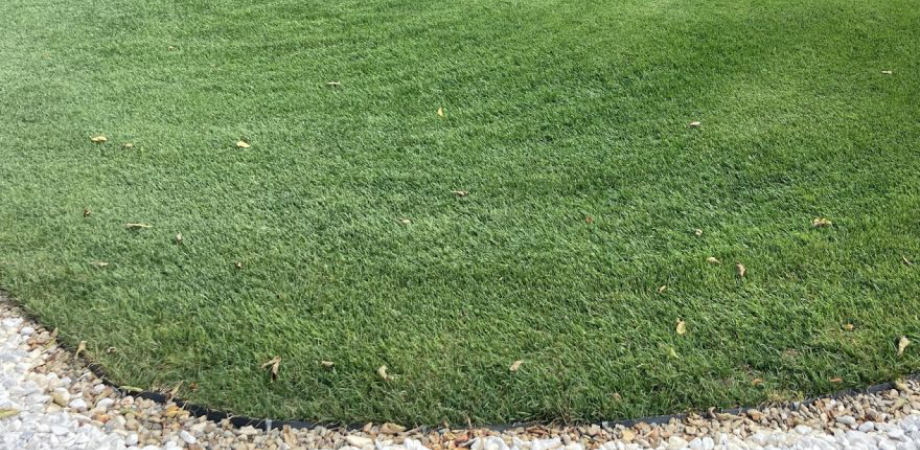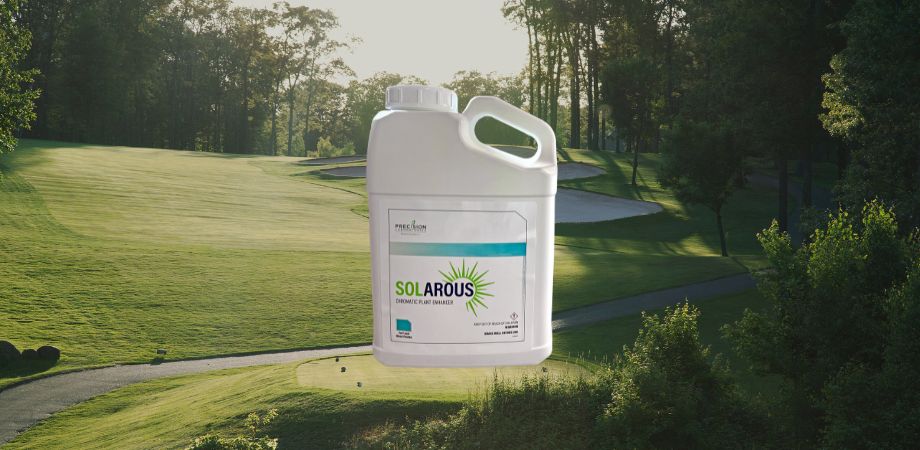ProVista bluegrass are new cultivars of Kentucky bluegrass that the Scotts Company has been working on for numerous years. If you are not already familiar with the technological advancements in the turf, there are two main attributes within the cultivars that turf professionals will benefit from. The first attribute is that the turf has been genetically engineered to require half as much mowing as traditional bluegrass which can lead to a significant reduction in labor and fuel usage, while the second attribute consists of a modification to the key EPSP synthase enzyme allowing the turf to be tolerant to glyphosate giving end users a tool to manage difficult weeds that can often take over a lawn.
Users of ProVista have the most success when the turf areas that are being seeded are part of a complete renovation. This means that all existing vegetation is killed off before trying to seed in ProVista. ProVista is not recommended in an overseeding situation where you may be trying to thicken or transition the lawn. ProVista will struggle with the competition of the existing turf and will likely fail to establish.
When renovating an existing or new lawn, turf professionals often target establishment in the late summer/early fall part of the year. During this time of the year, the soil and ambient temperatures are ideal for growing new grass, and the emergence of competing annual weeds is significantly reduced. Sometimes, new establishment projects can’t wait until fall and may require a spring seeding. This past spring, we at Scotts took the opportunity to conduct a ProVista spring seeding project to look at various seeding techniques and determine which technique would potentially lead to the quickest establishment of a ProVista stand of turf.
After killing an existing stand of bluegrass in early February 2024, we renovated the area and divided it into four equal parts of approximately 7,500 square feet. These areas were each seeded with ProVista Kentucky bluegrass at a rate of 2.5 pounds per thousand square feet on April 9th. The main difference in the four areas was the material that was used to protect the seed after installation. The areas were divided as follows:
- One area was covered with hydromulch.
- One area was covered with a straw netting material.
- One area was left as bare soil, but then subdivided with a nurse crop.
- One area had the existing dead vegetation left to be seeded into.
There was some subdivision within each block with regards to the fertilizers and weed prevention products that were applied, but the main focus of the project was to see how the various seeding techniques affected the establishment of the seed. The main takeaways of the project were:
- You can be successful with a spring seeding of ProVista.
- The seed covered with hydromulch and the seed drilled into dead turf seem to be establishing the quickest at this point.
- Use mesotrione products throughout the establishment to help fight off unwanted weed pressure.
- Do not attempt to use a quicker germinating nurse crop as a cover crop while waiting for the ProVista to germinate.
- After the ProVista germinates and begins to establish, use your glyphosate tool to help kill off unwanted weeds and grasses that are competing with the ProVista.
- Aggressively feed the establishing ProVista (.75 pounds of N every 3-4 weeks throughout the entire establishment of the turf).















